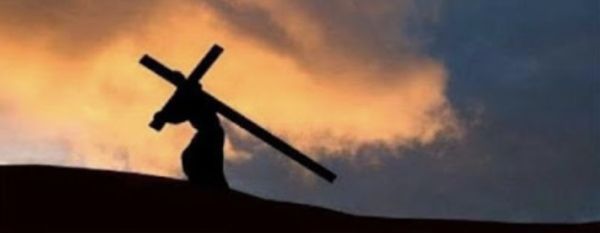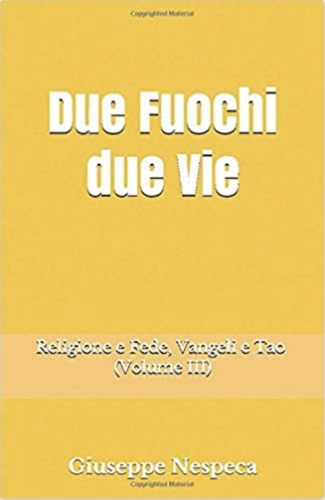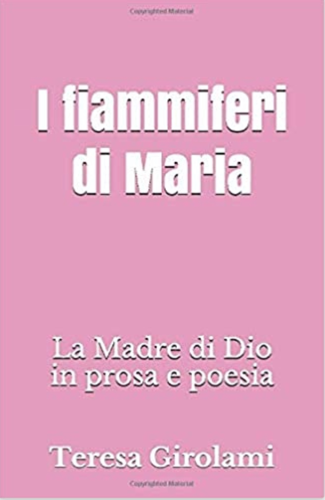Mary in the Church, begetting sons
(Jn 19:25-34)
The short Gospel passage in vv.25-27 is perhaps the artistic apex of the Passion narrative.
In the fourth Gospel the Mother appears twice, at the wedding feast of Cana and at the foot of the Cross - both episodes present only in Jn.
Both at Cana and at the foot of the Cross, the Mother is a figure of the genuinely sensitive and faithful remnant of Israel.
The bride-people of the First Testament are as if waiting for the real Revelation: they perceive all the limits of the ancient idea of God, which has reduced and extinguished the joy of the wedding feast between the Father and his children.
Authentically worshipping Israel prompted the transition from religiosity to working Faith, from the Old Law to the New Testament.
At the foot of the Cross an alternative kingdom is generated.
Fathers and mothers of a different humanity are formed, proclaiming the Good News of God - this time in favour exclusively of every man, in whatever condition he may find himself.
In the theological intent of John, the Words of Jesus "Woman, behold your son" and "Behold, your Mother" were intended to help settle and harmonise the strong tensions that at the end of the first century were already pitting different currents of thought about Christ against each other.
Among them: Judaizers; supporters of the primacy of faith over works; Laxists, who now considered Jesus anathema, intending to supplant him with a generic freedom of spirit without history.
At the beginning of the second century Marcion rejected the entire First Testament and seems to have appreciated only part of the New.
To those who now wanted to disregard the teaching of the 'fathers', Jesus proposes to make past and newness walk together.
The beloved disciple, the icon of the authentic son of God [the widespread Word-event of the New Testament] must receive the Mother, the culture of the covenant people, at home - that is, in the nascent Church.
Yet, even if it is in the Christian community that the full meaning of the whole of Scripture is discovered, the Person, the story and the Word of Christ Himself cannot be understood nor will it bear concrete fruit with the many dreams ahead, without the ancient root that generated it.
Projections alone are not enough, even if they shake the mental prisons, often buildings of false certainties: the Seed is not an enemy to be fought, but a virtue that comes from the depths.
The Covenant is precious, it gives a real jolt to life. Thus new family relationships flourish: then the Church is born.
And the Church raised by her Lord will reveal something portentous: fruitfulness from nullity, life from the outpouring of it, birth from apparent sterility.
In Mary and the faithful icons generated from the breast of Christ - inseparable in the Mission - the intimate cooperation is intensified by the moments of a humble and silent community existence.
In the perfect adoration of the identity-character of the Crucified One and in the movement of self-giving, the freedom of abasing oneself.
If someone settles, the new will advance.
And the old can also re-emerge, this time in perpetuity. For there are other Highnesses. For what makes one intimate with God is nothing external.
A river of unthinking attunements will reconnect the human spirit of believers to the motherly work of the Spirit without barriers.
Says the Tao Tê Ching (xxii): "If you bend, you preserve yourself; If you bend, you straighten; If you hollow, you fill; If you wear out, you renew; If you aim at the little, you obtain; If you aim at the much, you are disappointed. That is why the saint preserves the One [the highest of the few], and becomes a model [sets the measure] for the world. Not of itself sees, therefore it is enlightened; not of itself approves, therefore it shines; not of itself glorifies, therefore it has merit; not of itself exalts, therefore it endures. Precisely because he does not contend, no one in the world can contend with him. Were what the ancients said: if you bend you keep, were they empty words? Verily, whole they returned.
Thus, in silence we will not oppose hardship. The offended body will speak, manifesting the soul and filling the life, in a crescendo.
To internalise and live the message:
How do you enter into the rhythm of this Gospel passage? In which character do you recognise yourself, or why do you see yourself in all of them? What is your measure in each one, that you give to the world?
Blood Water: Body still torn apart
Blood and Water: life given and life imparted
(Jn 19:31-37)
The cruel departure of the Lord is not an end: it inaugurates new life, albeit amidst gruesome signs of true death.
The Crucified One saves: he communicates a saved life. He makes us pass from one world to another: only in this sense does the old Easter coincide with the new.
His is a Liberation and Redemption that proceeds far beyond the ritual promises of propitiatory sacrifices, and the religion of purifications.
The Blood of Christ is here a figure of the ultimate Gift of Love. The Water from the same pierced side is that which is assimilated and makes one grow.Such supra-eminent Friendship, given and welcomed, conquers all forms of death, because it offers a double principle of indestructible life: acceptance of an ever-new proposal, and growth from wave to wave.
Thus the Jewish feast of liberation is replaced by the Christian Passover - and the signs of the essential sacraments.
In the body of Jesus and in that of the men crucified at his side, John sees the fraternity of the Son with the human race, also made a divine sanctuary.
When Jesus is dead, we too can follow him [evildoers whose legs are broken] because no one can take the life of the Risen One, even if he tries to do so to those unfortunate with him.
In fact, the 'piercing' of Christ's Body continues even after his death on the Cross (v.34): the hostility towards him will not subside, indeed it wants to annihilate him forever.
But from her torn Body [the authentic Church] will continue to gush forth dizzying love and finally the joy of a festive banquet, as promised since the wedding at Cana.
The evangelist's testimony becomes the solemn foundation of the Faith of future disciples. And the Faith will supplant the yoke of religion that has already been redeemed.
Thus the author invites each of us to write our own Gospel (Jn 20:30-31) in the experience of God's paradoxes and salvation, which has reached us precisely from our sins or uncertain situations.
The future disciples are proclaimed blessed (Jn 20:29) precisely because they "did not see" that spectacle with their eyes.
They recognised it in themselves and in their own going - repeatedly experiencing in their own weaknesses the place of Mercy.
Motherly sense, not Church of spinsters
At St Martha's, on 21 May, Pope Francis celebrated Mass for the first time in the memory of the Blessed Virgin Mary Mother of the Church: as of this year, in fact, the feast day in the general Roman calendar is celebrated on the Monday after Pentecost, as ordered by the Pontiff in the decree Ecclesia mater of the Congregation for Divine Worship and the Discipline of the Sacraments (11 February 2018), precisely to "foster the growth of the maternal sense of the Church in pastors, religious and the faithful, as well as of genuine Marian piety".
"In the Gospels every time Mary is spoken of, it is the 'mother of Jesus'," Francis immediately pointed out in his homily, referring to the Gospel passage from John (19:25-34). And if 'even in the Annunciation the word "mother" is not said, the context is one of motherhood: the mother of Jesus,' said the Pope, emphasising that 'this motherly attitude accompanies her throughout Jesus' life: she is mother'. So much so that, he continued, "in the end Jesus gives her as mother to his own, in the person of John: 'I am going away, but this is your mother'". Here, then, is "the motherhood of Mary".
"Our Lady's words are mother's words," the Pope explained. And they are "all of them: after those, at the beginning, of availability to God's will and praise to God in the Magnificat, all of Our Lady's words are the words of a mother". She is always "with her Son, even in her attitudes: she accompanies her Son, she follows her Son". And again 'first, in Nazareth, she raises him, educates him, but then she follows him: 'Your mother is there'". Mary "is mother from the beginning, from the moment she appears in the Gospels, from that moment of the Annunciation until the end, she is mother". Of her "one does not say 'the lady' or 'Joseph's widow'" - and indeed "they could say that" - but always Mary "is mother".
"The Fathers of the Church understood this well," the Pontiff affirmed, "and they also understood that Mary's maternity does not end in her; it goes beyond". Again the fathers "say that Mary is mother, the Church is mother and your soul is mother: there is feminine in the Church, which is motherly". Therefore, Francis explained, 'the Church is feminine because she is "church", "bride": she is feminine and she is mother, she gives birth'. She is, therefore, 'bride and mother', but 'the fathers go further and say: "Your soul is also Christ's bride and mother"'.
"In this attitude that comes from Mary who is mother of the Church," the Pope pointed out, "we can understand this feminine dimension of the Church: when she is not there, the Church loses its true identity and becomes a charity association or a football team or whatever, but not the Church.
"The Church is "woman"," Francis relaunched, "and when we think about the role of women in the Church we must go back to this source: Mary, mother". And "the Church is 'woman' because she is mother, because she is capable of 'giving birth to children': her soul is feminine because she is mother, she is capable of giving birth to attitudes of fecundity".
"Mary's maternity is a great thing," the Pontiff insisted. God in fact "wanted to be born as a woman to teach us this way". What is more, 'God fell in love with his people like a bridegroom with his bride: this is said in the Old Testament. And it is "a great mystery". As a consequence, Francis continued, "we can think" that "if the Church is mother, women will have to have functions in the Church: yes, it is true, they will have to have functions, many functions they do, thank God there are more functions women have in the Church".
But "this is not the most significant thing," the Pope warned, because "the important thing is that the Church be a woman, that she have this attitude of bride and mother". With the knowledge that 'when we forget this, it is a male Church without this dimension, and sadly it becomes a Church of spinsters, living in this isolation, incapable of love, incapable of fruitfulness'. Therefore, said the Pontiff, 'without woman the Church does not go forward, because she is woman, and this attitude of womanhood comes to her from Mary, because Jesus wanted it that way'.
In this regard, Francis also wanted to indicate 'the gesture, I would say the attitude, that most distinguishes the Church as a woman, the virtue that most distinguishes her as a woman'. And he suggested recognising it in Mary's 'gesture at the birth of Jesus: "She gave birth to her first-born son, wrapped him in swaddling clothes and laid him in a manger"'. An image in which we find "precisely the tenderness of every mother with her child: caring for him with tenderness, so that he does not injure himself, so that he is well covered". And 'tenderness' is therefore also 'the attitude of the Church that feels woman and feels mother'.
"St Paul - we listened to him yesterday, we also prayed to him in the breviary - reminds us of the virtues of the Spirit and speaks to us of meekness, of humility, of these so-called 'passive' virtues," the Pope said, pointing out that instead "they are the strong virtues, the virtues of mothers". Here it is that, he added, 'a Church that is a mother goes on the path of tenderness; it knows the language of such wisdom of caresses, of silence, of a gaze that knows compassion, that knows silence'. And "also a soul, a person who lives this belonging to the Church, knowing that she is also a mother must go down the same path: a meek, tender, smiling person, full of love".
"Mary, mother; the Church, mother; our soul, mother," Francis repeated, inviting us to think "of this great richness of the Church and ours; and let the Holy Spirit fertilise us, us and the Church, so that we may also become mothers of others, with attitudes of tenderness, of meekness, of humility. Sure that this is Mary's way". And, in conclusion, the Pope also noted how "Mary's language in the Gospels is curious: when she speaks to her Son, it is to tell him about the things that others need; and when she speaks to others, it is to tell them: 'do whatever he tells you'".
[Pope Francis, S. Marta homily, in L'Osservatore Romano 22/05/2018]












